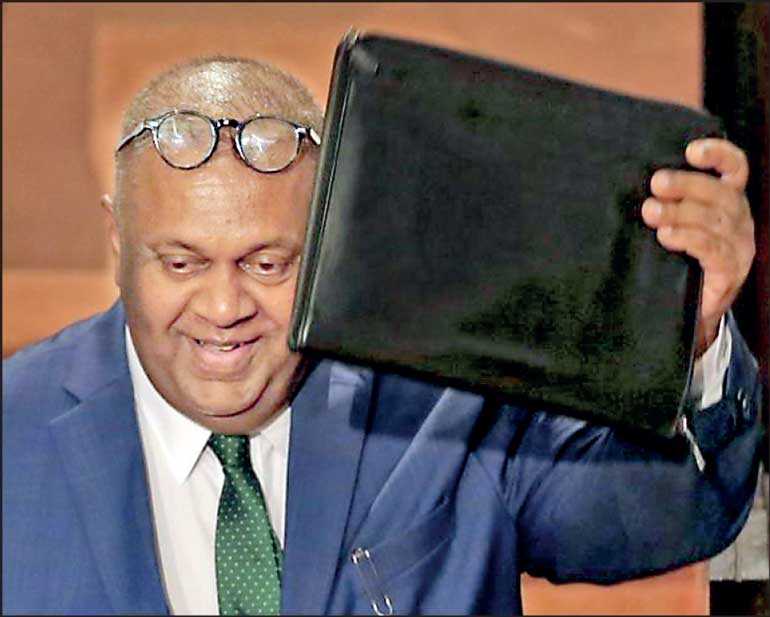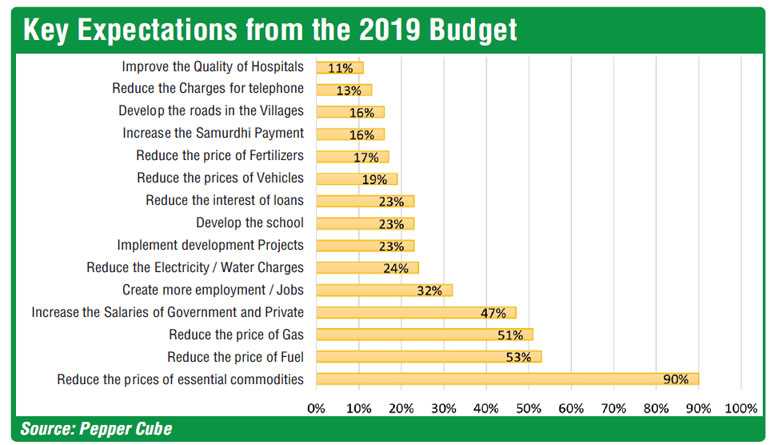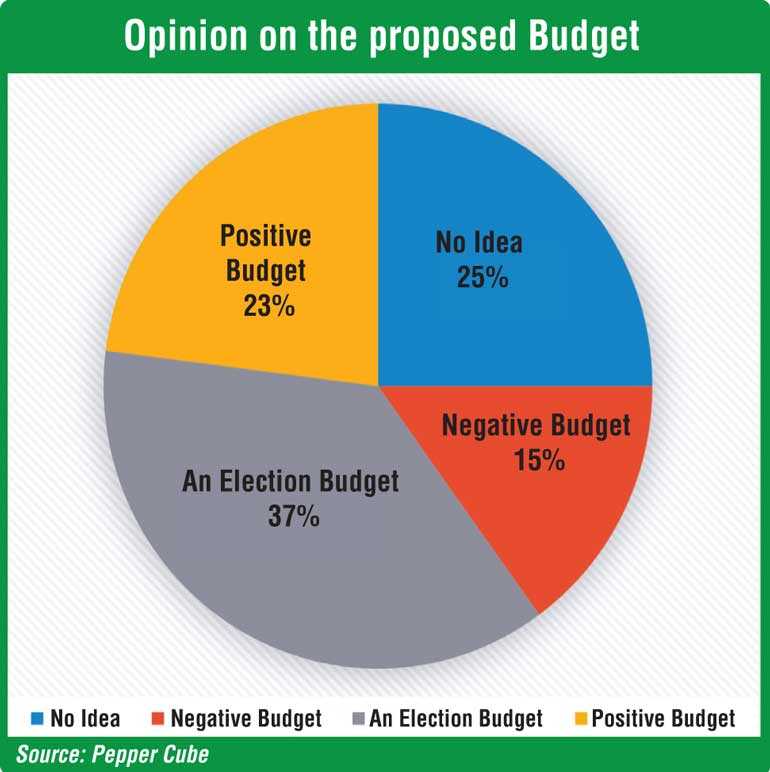Tuesday Apr 15, 2025
Tuesday Apr 15, 2025
Wednesday, 13 March 2019 00:00 - - {{hitsCtrl.values.hits}}


The share of voice (SOV) of the Budget 2019 was very strong with almost every newspaper every media station, paper or radio highlighting the opinions and challenges. But I did not see anyone report the research presentation that was made on 6 March (the day after the budget) at the Daily FT-Colombo University MBA Alumni Association Forum.
Awareness Budget- 70%
It’s very strange but even with all the media reporting the Budget live that includes the mobile phone companies  giving live updates of the key proposals like for instance the 14 scholarships that will be given to the top performing Advanced Level students from Harvard, MIT and Oxford, etc., only 70% was aware of the Budget proposals with 20% stating they were not aware and 9% stating they had no idea.
giving live updates of the key proposals like for instance the 14 scholarships that will be given to the top performing Advanced Level students from Harvard, MIT and Oxford, etc., only 70% was aware of the Budget proposals with 20% stating they were not aware and 9% stating they had no idea.
The argument is, does it mean that a typical brand with high penetration such as laundry soap or toothpaste can reach only a maximum of 70% of the market? Or was it that the category was not interesting, hence the awareness drop of 30%?
Positive Budget – 23%
An interesting revelation by the market research company as per appendix 1 was that only 23% said that the Budget was positive whilst 37% said it was an election budget which is factually not correct. The logic being that technically there weren’t many populist proposals that can generate a ‘wow’ response except for the housing loan at low interest rates for newly-married couples and the name-based car number plates as a case in point.
Sadly almost 40% said that it was a negative Budget or that they had no idea of the Budget. May be this can be typical non-supporters of the party presenting the Budget proposal but one cannot make this blanket statement as a budget will have an impact on one’s own household expenditure or the company one works for.
It will be interesting to find out what the negative proposals were. One such proposal can be the charge of 3.5% on credit card payments made from online payments. Once again the fact that 25% had ‘no idea’ of the Budget means that they are totally disengaged from the internal workings of the country.
What people wanted
If one does a deep dive to what the needs of the people are, it gives a good insight to the key issues that a typical household is challenged with. As per Appendix 2, a staggering 90% wanted the prices of essential commodities to be reduced. This is something that the Budget did not address and the policymakers must do a deep dive to understand how it can be addressed.
One of the key insights from research studies done is when a country focuses on tourism and “over-tourism” takes place above the carrying capacity of the country, the prices of essentials become unaffordable to the domestic people. We must do this study given that most of the products are imported. Namely, rice, sugar, flour and the limited produce locally of vegetables and fruits need closer examination. In some counties we see the governments in power being voted out due to tourism explosion.
It’s strange but if I am to share some parable usage insights of the Sri Lankan household we see that purchase frequency of soaps is increasing from nine to 11 days as per the latest research data which does not mean that people are ‘not bathing’ but they are using the soaps more sparingly. This is an indication of the extent to which people are cutting on costs. If this issue is not addressed, the typical decision by the masses at the next election needs no prediction.
Fuel and gas
We see from Appendix 2 that over 50% are wanting the prices of fuel and gas to be reduced. This once again goes back to the cost of living and the implication to the Government. Some speculate that the Budget was only a ‘policy statement’ given that the IMF is keeping an eye on Sri Lanka but may be closer to the elections the above issues will be addressed. I am not sure of the implications of such measures when a country is on an IMF program.
What is a budget?
If one strictly looks at a budget of a country, it is the roadmap of the development agenda of a country. Whilst the South Asian region is growing at 7%, Sri Lanka is staggering as just 3%, which does not augur well for a small country which is just $ 90 billion in GDP. The current budget deficit is at Rs. 685 billion and the debt to GDP ratio is at 83.4%, which is higher than last year’s number of 77.6%. It’s very clear that the expected target of 72% to be achieved by 2022 will be impossible unless Sri Lanka has some serious policy reforms taking ground. However, with the current performance in the last four years one cannot expect a strong behaviour shift in this direction given the charges by society on corruption allegations that includes the Central Bank bond scam.
What next
Whilst we see that another budget has gone by, now the challenge is what changes can come about from the expected Provincial Council elections and thereafter the presidential elections by the end of the year. The million dollar question is, when will Sri Lanka become a 100 billion economy and a 100 billion dollar nation brand value so that as per research globally there can be twist in the economic development landscape? As at now the GDP is at around 90 billion whilst Sri Lanka as a nation brand is valued at $ 87 billion.
(The writer can be contacted on [email protected]. The thoughts are strictly his personal views and do not reflect the organisations he serves in Sri Lanka or globally.)